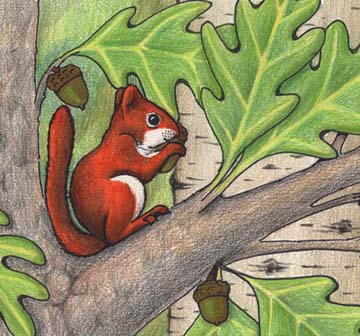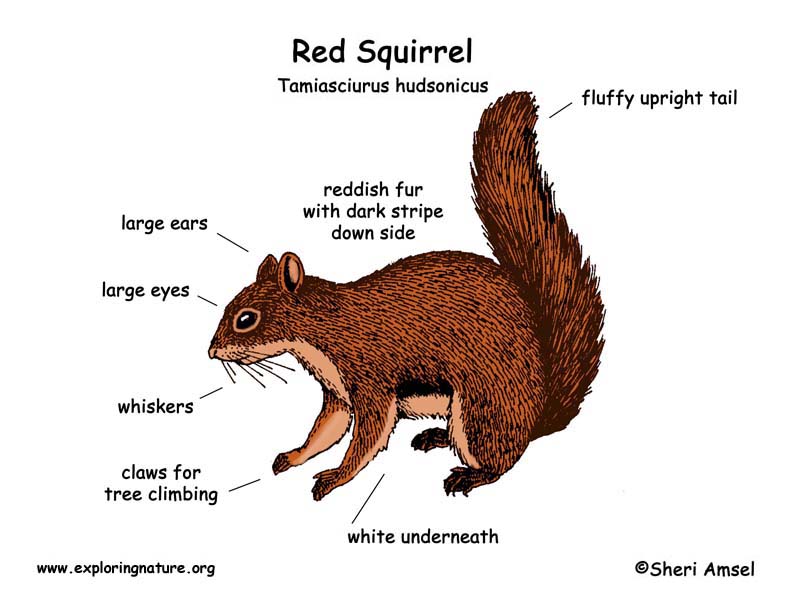

The red squirrel is found in Canada and the northern United States down to the Appalachian Mountains.
They live in coniferous, deciduous, and mixed forests.
They are reddish-brown on top and have white bellies with a black stripe where the two colors come together on their sides. They have ear tufts in the winter. They are about a foot long including their tail and weigh about 8-9 ounces. Their tail is not as bushy as the gray squirrel’s tail.
They are active during the day (diurnal) and all year round. They live much of their lives in the trees (arboreal).
They eat pine seeds, nuts, fruit, insects, bird eggs and even small animals. Like the gray squirrel they bury seeds for later so are important tree planters and see dispersers. They nest in tree cavities or underground in tunnels.
Predators include: owls, hawks, martens, weasels, coyotes, and house cats.
They live alone except to mate in the spring. Females are pregnant for about 5 weeks (gestation) and can have 2-6 young. They may go on to have a second litter in late summer.
They live for about 7 years in the wild. They are listed as Lower Risk - least concern.
Kingdom: Animalia
Phylum: Chordata
Subphylum: Vertebrata
Class: Mammalia
Order: Rodentia
Suborder: Sciuromorpha
Family: Sciuridae
Subfamily: Sciurinae
Genus: Tamiasciurus
Species: Tamiasciurus hudsonicus
When you research information you must cite the reference. Citing for websites is different from citing from books, magazines and periodicals. The style of citing shown here is from the MLA Style Citations (Modern Language Association).
When citing a WEBSITE the general format is as follows.
Author Last Name, First Name(s). "Title: Subtitle of Part of Web Page, if appropriate." Title: Subtitle: Section of Page if appropriate. Sponsoring/Publishing Agency, If Given. Additional significant descriptive information. Date of Electronic Publication or other Date, such as Last Updated. Day Month Year of access < URL >.
Amsel, Sheri. "Squirrel (Red)" Exploring Nature Educational Resource ©2005-2024. December 13, 2024
< http://www.exploringnature.org/db/view/Squirrel-Red >

